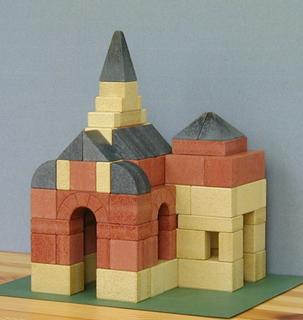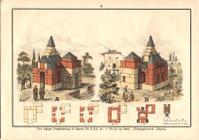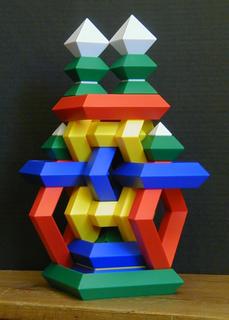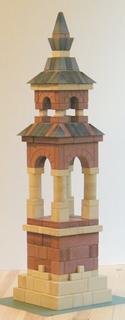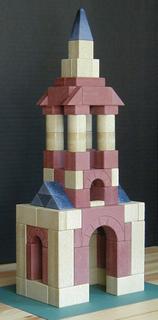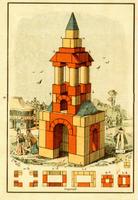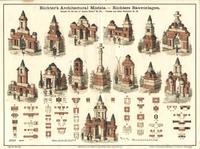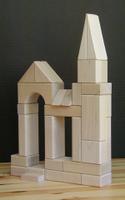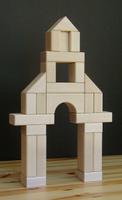 Creativity
CreativityI feel rather proud of today's construction. It is largely of my own design. The doorway and two lowest blocks on either side being based on an example in Exploring Learning : Young Children and Blockplay
I rather enjoyed the creative process.
I began by thinking that pattern of blocks could be repeated rather attractively, adding the tall think pillars for dramatic effect. Then I worked out how to use the balance of the larger blocks (again using the 36 blocks of Froebel's #6) for roofing.
I like it.
Wedgits
Earlier I spent some time with the Wedgits. I had been backing off for a bit because the bright colors are a bit too much for me to allow extensive use. Sensory issues are a large problem for most, if not all, folks on the Autistic Spectrum, though they certainly aren't exclusive to us.
In addition to bright colors, noise can be a problem, and the Wedgits are appallingly noisy if the structure collapses.
Today I was able to wear my new noise-canceling headphones while playing, and they helped immensely. My psychiatrist had encouraged me to get them so that I would be more willing to tackle power tool projects, among other things, and I think he was very right.
Creativity
I am now wondering if I will be more willing to explore risky structures with my larger Unit Blocks if failure won't be so distressing. It has been quite routine for me to pack up and put away whatever I have been playing with if there was a noisy crash.

